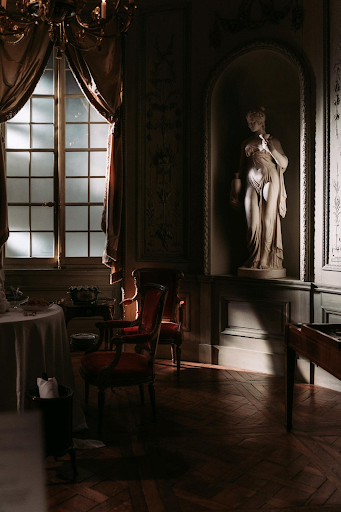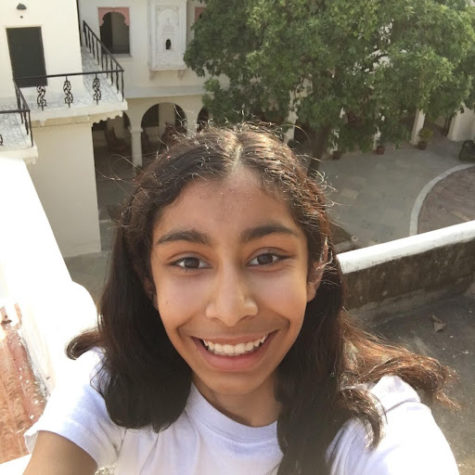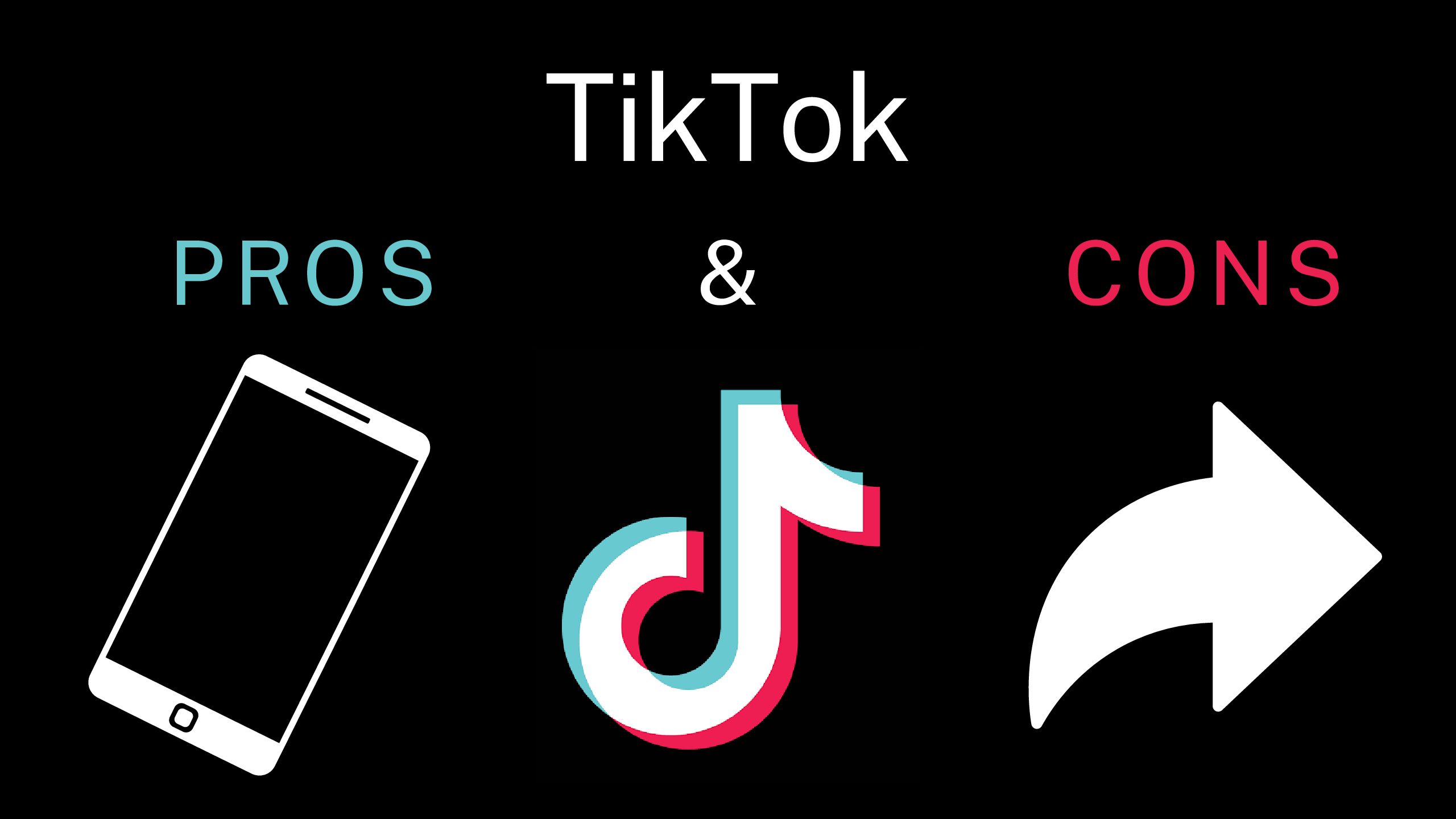The Whiteness of Dark Academia: Centering Authors of Color

Dark academia is an aesthetic associated with classic literature, art, music, philosophy and the general fashion/culture of the 1800s-1940s.
December 31, 2021
Rain pattering softly on the roof as you sip tea and read Wuthering Heights in a wingback armchair in front of a crackling fire. Debating about philosophy with your friends while walking to a secondhand bookstore in Edinburgh. Feverishly reviewing your notes about Macbeth at 3 a.m. while absent mindedly twirling your fountain pen, occasionally taking a break to step out onto your balcony to look at the stars. Hanging up your trench coat after going to a performance of the Brandenburg concertos with your significant other, snowflakes dusting your hair.
What kind of aesthetic do you think these vignettes conjure? If you guessed dark academia, you would be correct. In the past months since the pandemic has started, dark academia has gained a dedicated cult following across the globe, connected by platforms such as Instagram and Tumblr.
If the term dark academia is unfamiliar to you, let me try to explain. Dark academia is an aesthetic associated with classic literature, art, music, philosophy and the general fashion/culture of the 1800s-1940s. The aesthetic tends to romanticize darker things as well as celebrating pretentiousness and education, whereas many other aesthetics rebel against learning. Clothes adherent of this aesthetic wear are reminiscent of garments in fashion before World War II, which include blazers, pleated knee length skirts, Doc Martens, cardigans and button down shirts, which are usually muted, darker colors, such as navy, beige, dark green, burgundy or gray.
Many people have turned to dark academia during the pandemic, while schools were remote, looking for a nostalgic way of learning. The origins of this aesthetic were on Tumblr around 2015 and it was meant to be a book club of sorts, focusing on classic and gothic novels such as Jane Eyre and Frankenstein. 2017 brought a wave of interest, and dark academia became more of a subculture and started moving onto other platforms as well. Ironically, (since dark academics crave a time when technology wasn’t as advanced, to befriend and fall in love in person), social media has kept the dark academia community thriving, with moodboards on Instagram, “how to” guides on Tumblr, videos on Tiktok of gothic architecture, candles and old books, and playlists on Spotify and Youtube meant to make you feel like you’re a 19th century villain in a classic work of literature.
I love dark academia (although it is not without its issues- glamorizing intoxication and all nighters are just a few examples), not only because of the general moodiness and that certain je ne sais quoi of it all, but also because dark academia makes me feel like I’ve traveled back in time and it’s possible to live without technology, for at least a little while. But lately I’ve been thinking — staples of dark academia literature include works like If We Were Villains and A Secret History. Generally speaking, dark academics prefer “classic” literature for the most part, such as works by the triple threat Brontë sisters, Fyodor Dostoevsky, Charles Dickens, Henry David Thoreau, and Virginia Woolf. But lists of “best books to read in autumn, sitting in a window seat, looking out onto the rooftops of London,” rarely include authors of color, or authors outside of the Western canon, even though there is a plethora of LGBTQ+ novels included in these kinds of compilations. In all the posts I’ve scrolled through on Tumblr, never have I once seen one that mentions Langston Hughes or Audre Lorde, Their Eyes Were Watching God or I Know Why the Caged Bird Sings.
Why is this? Since dark academics tend to romanticize higher educational institutions such as Ivy League schools, they don’t stop to think about how racism has permeated every particle of these places from discriminating against Asian American applicants, to centering historically white books in their English classes, to their ties to slavery. In addition, most “classic” literature which dark academics consume, were created by white people (mostly cisgender, heterosexual men) and have racist overtones (although we must remember these books were products of their time, and now the standards have been, thankfully, set higher). Since most dark academics don’t stop to think beyond how something “fits” into their aesthetic, whether it be The Great Gatsby or Tristan und Isolde, the majority of the art in the aesthetic is created by and featuring white people. And since this alienates many people of color from participating in the aesthetic, the cycle continues.
So what can we do to counter this? Well, one novel that’s been on my mind recently is These Violent Delights by Chloe Gong. It’s a young adult retelling of Romeo and Juliet set in 1920s Shanghai, run by gangsters. The majority of the characters are either Asian or white, and there are some that are LGBTQ+ as well. Oh- and not to mention, “Juliet” is a complete girlboss! So many strong female characters and sensitive men, flipping stereotypes. To quote the author, “These Violent Delights is my love letter to Shanghai, to Shakespeare, and to my younger self, who so desperately wanted to find an adventure on the shelves starring someone with a face like hers. This book is also my mission as an English major to take a classic that we so dearly love and revamp it: in a new culture, with queer rep, and as a brutal takedown of colonialism—without losing its core themes about love, and hate, and loyalty.” Dark academia needs more of these kinds of books- modern ones and classics that are inclusive of people of color as well as the LGBTQ+ community. If you are looking to diversify your bookshelf while still retaining the dark academia qualities of classic literature, These Violent Delights, The Invisible Life of Addie LaRue, Ace of Spades, and The Gilded Wolves, are all great places to start. If you want more dark academia classics by and starring people of color, Romance in Marseille, Kindred, and One Hundred Years of Solitude might be for you. Many lists on Goodreads include numerous other books besides these, so I encourage you to check those out as well if this article has piqued your interest in dark academia, or if you were already a longtime enthusiast.
So if you’re one day deciding between Pride and Prejudice or The Poppy War to listen to on your road trip to tour East Coast liberal arts colleges, I hope you choose R.F. Kuang over Jane Austen, even if your English teacher gushes about Elizabeth Bennet and Mr. Darcy. Because exposing authors of color, especially outside the Western canon, normalizes their stories and makes them more mainstream- not only in this specific aesthetic, but in our society as a whole. Representation does matter- I can safely say as an Asian lover of everything dark academia, reading These Violent Delights and The Gilded Wolves filled this little hole in my heart that I had never really acknowledged.
Sources:
https://aesthetics.fandom.com/wiki/Dark_Academia
https://www.nytimes.com/2020/06/30/style/dark-academia-tiktok.html?searchResultPositio
https://www.teenvogue.com/story/ivy-league-slavery-ties
https://www.goodreads.com/en/book/show/50892212-these-violent-delights
https://www.themadameblue.com/blog/finding-diversity-in-dark-academia







Jimmy Jimbo • Nov 11, 2024 at 1:53 pm
This is very silly, in my opinion. I dislike Dark Acadamia, mainly because of how pretentious it seems. Often in classical music, it gets, unfortunately, associated with these things. At some point, it becomes less about the art itself, and more just about the aesthetic of old things. That is what happens when you look at something because of the aesthetic of it. But this is another conversation. This article says that it is bad, because it is too white. This is a difficult truth. While many people enjoy this very old 1800s style things, the 1800s was a generally, very racist time. The vast majority of people who weren’t white men got little to no representation, and Dark Acadamia is based around what was represented during the 1800s. This is a fair critique. What I disagree with is the conclusion: that we should “diversify our bookshelves”. There is nothing fundamentally good about reading things by people of varying races. If you only read things made by one specific group, then that is not good, I’d say. But I don’t think race and identity should really be a factor when we are consuming media. If we like or dislike something, then that is that. I think, generally, race should be irrelevant to these things. That is my hot take. Pretty strange stuff.